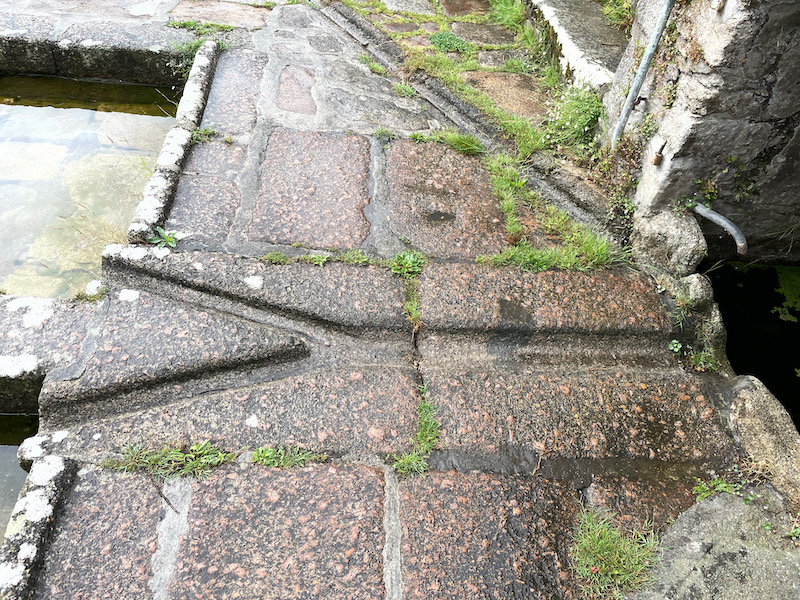Our Blog - Saint Renan, France
Saint Renan dates back to Roman times, with a Roman road passing through it. The population has been continually growing, up to over 8,000 people. It was relatively flat until about 1950, when it became a commuter town for Brest and the growth accelerated.
We had found a nice walking tour of the historical center but started our morning walk with Lucy around this large lake, called the Lac de Ty Colo. It is a pretty large lake with a water park in the summer, and it seemed to be "guarded" by this little gaggle of geese.

The main part of the historic center is around the the Place du Vieux-Marché (Square of the old market). There are several old houses of the 15th and 16th centuries. This half-timbered house dates from the 15th century and has a special roof called a "cap-type" roof. Under the beams on the main floor are friezes of weird faces and monsters. The last picture is the doorway of the house to the right of the half-timbered one, and it has really nice carved stone around it.
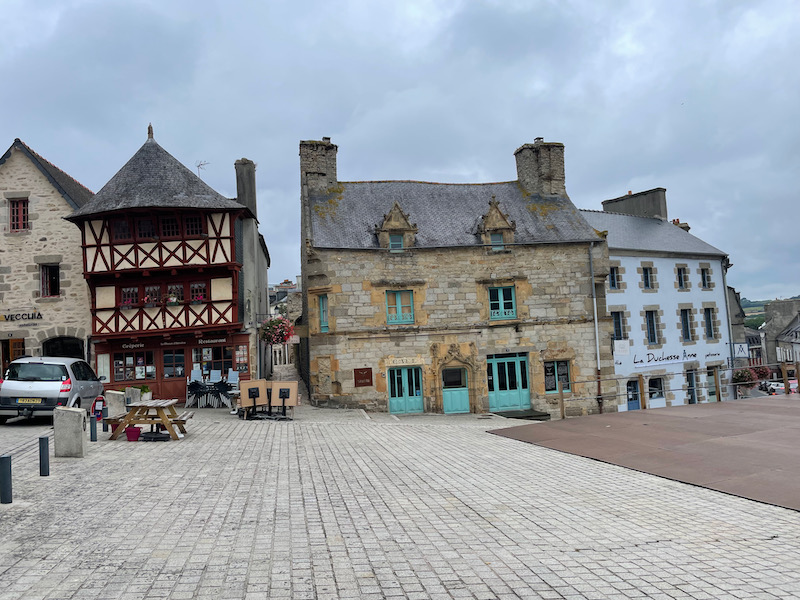
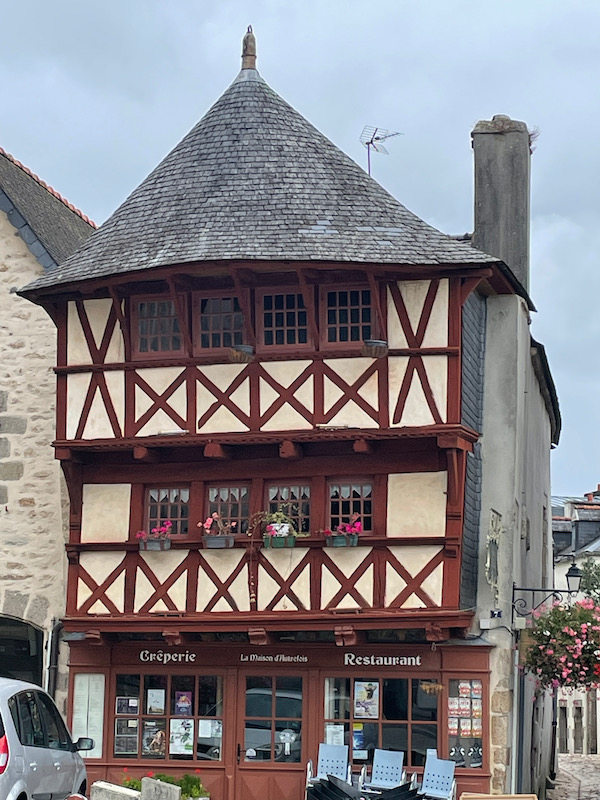
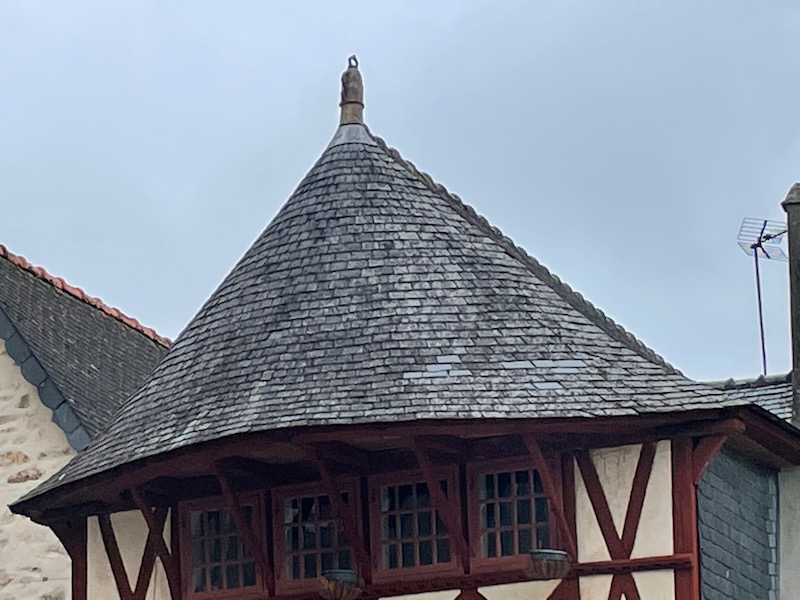
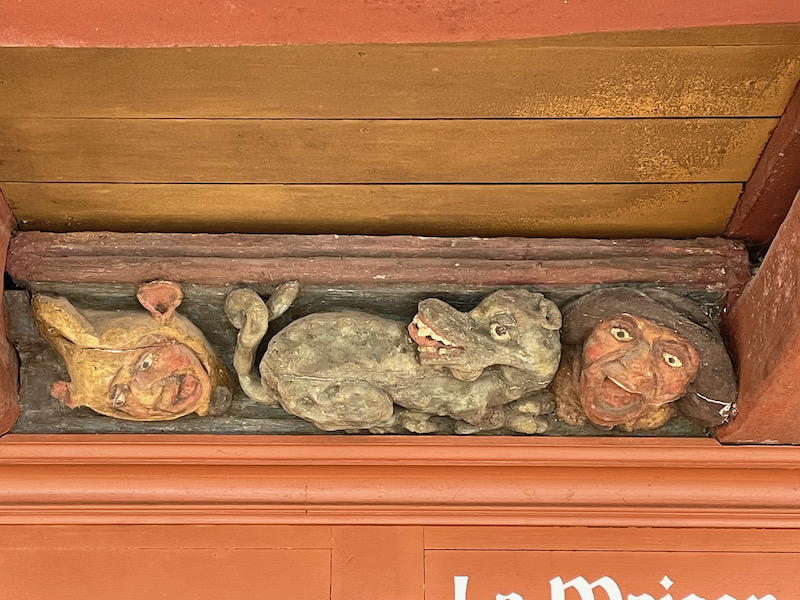
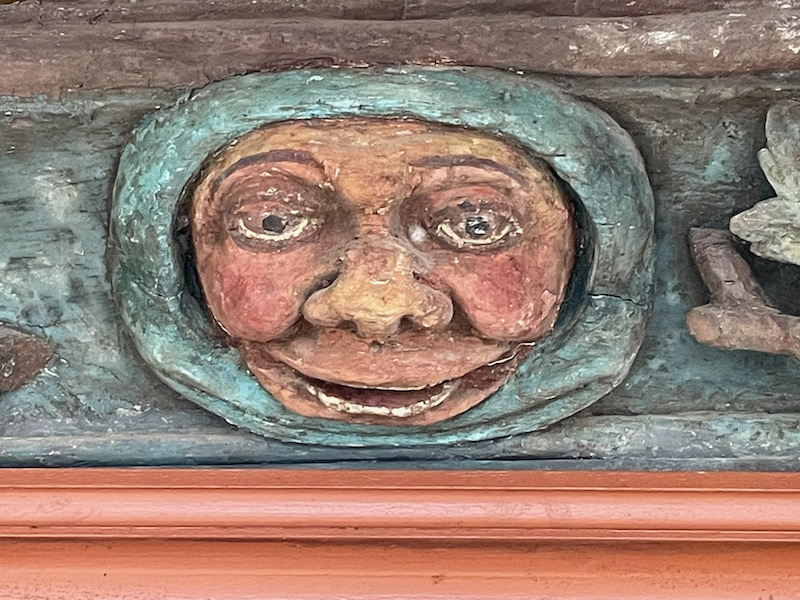
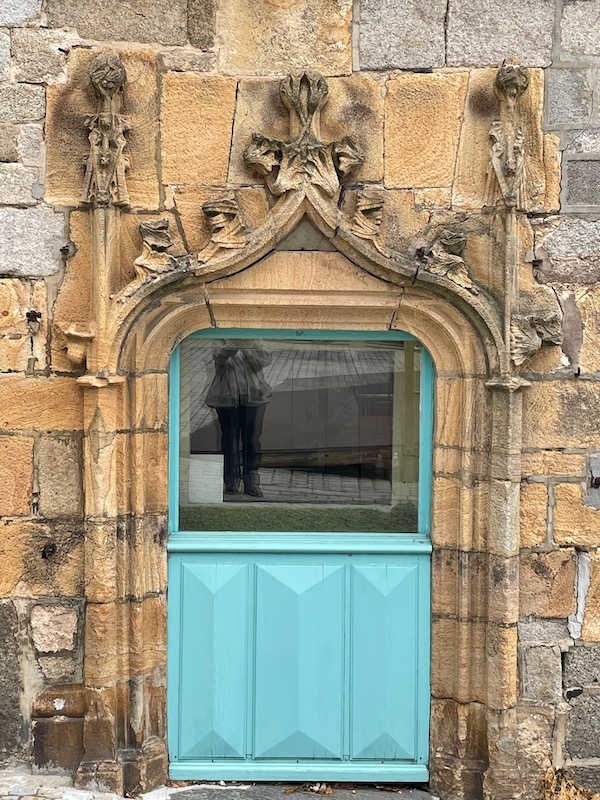
The whole town was organized around its markets and each neighborhood has a specialty. In addition to the Place du Vieux-Marché, there were squares named Place aux Chevaux (Horse Square), Place aux Vaches (Cow Square), Place aux Cochons (Pig Square), and Plax Aux Choux (Cabbage Square). Here is a very nice old well with lots of flowers.
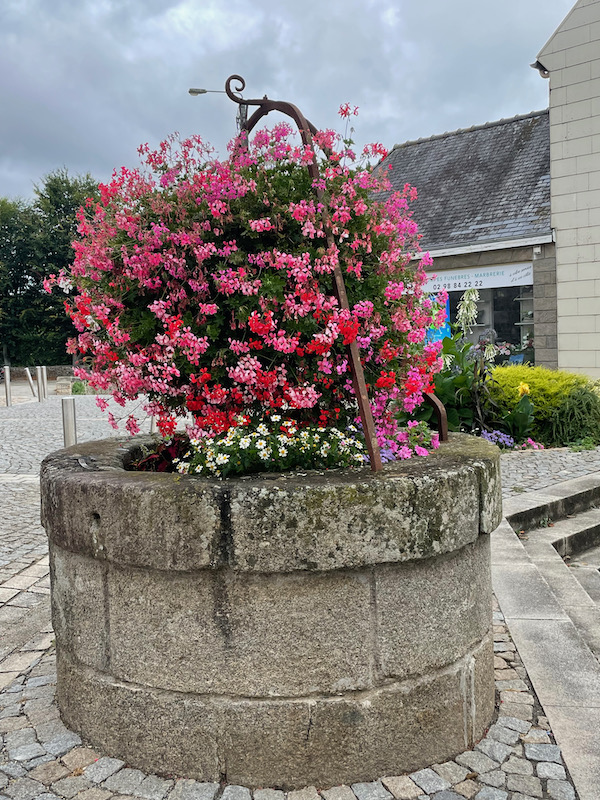
The church of Notre-Dame de Liesse was consecrated in 1772, built on the site of an old Druid temple. It used to have a Gothic tower, but it collapsed after being hit by lighting and was rebuilt in 1771. The Romanesque style choir was added in 1869 to enlarge the church. One oddity of this church is that, contrary to Christian tradition, the church orientation is from the East (the door) to the West (the choir).
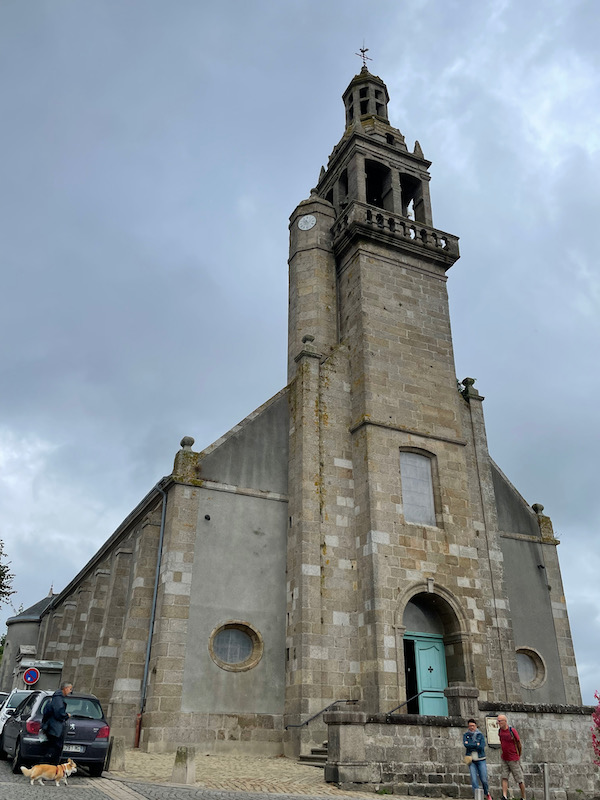
On the interior, the main aisle has the inverted wooden ceiling but the side aisles have a simple flat wooden ceiling. The main altar has statues of 5 of the 12 apostles (it used to have all 12 but the others have been removed). The wooden ceiling continues around the apse of the choir with ribbed vaults.
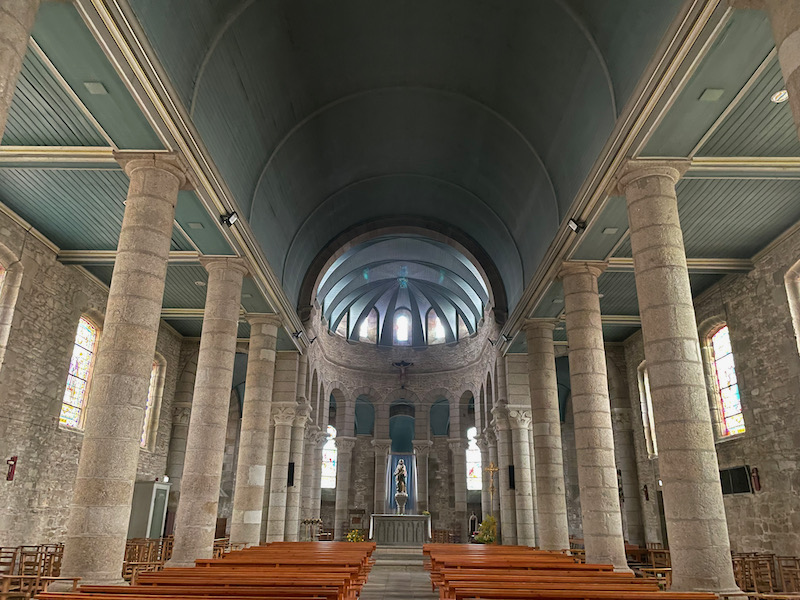
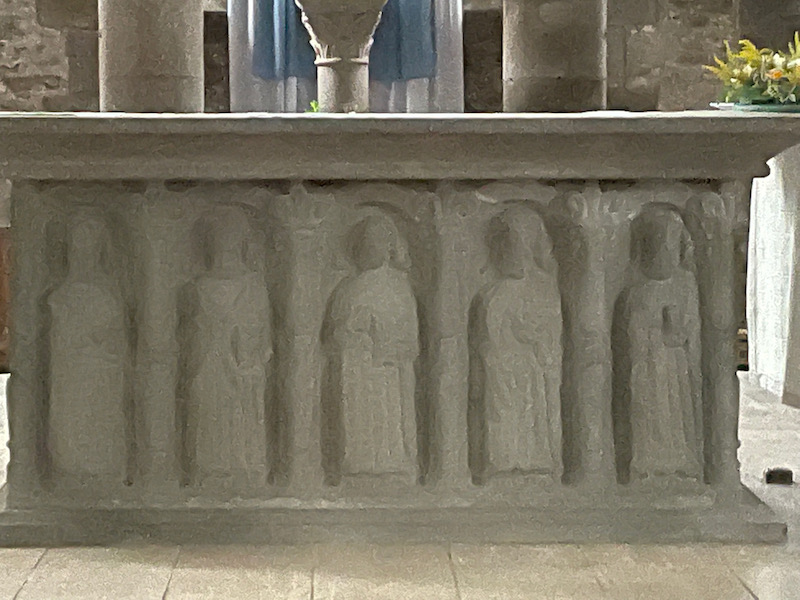

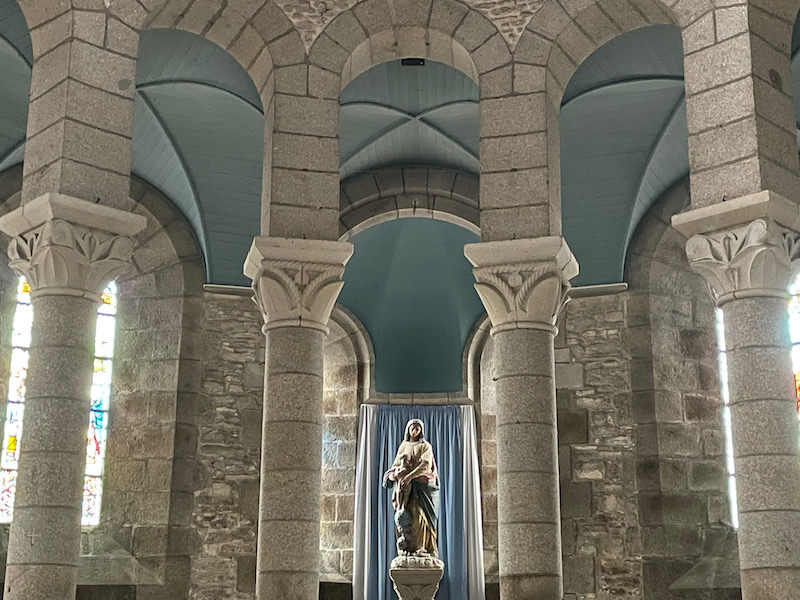
As you can see from the pictures above, there isn't much decoration in the church. There was work done in 1969 with a "redesign" which included stripping the church of most of the ornamentation. But there are a few things left, including this nice statue of Saint Roch. Here he is shown with a dog that is holding up bread, which goes back to one of the scenes of his life where he falls ill from working with plague victims and retreats to a hut in the forest. A dog from a nearby house brings him bread and licks his wounds, helping him heal. He is often seen with a dog in statues and paintings.
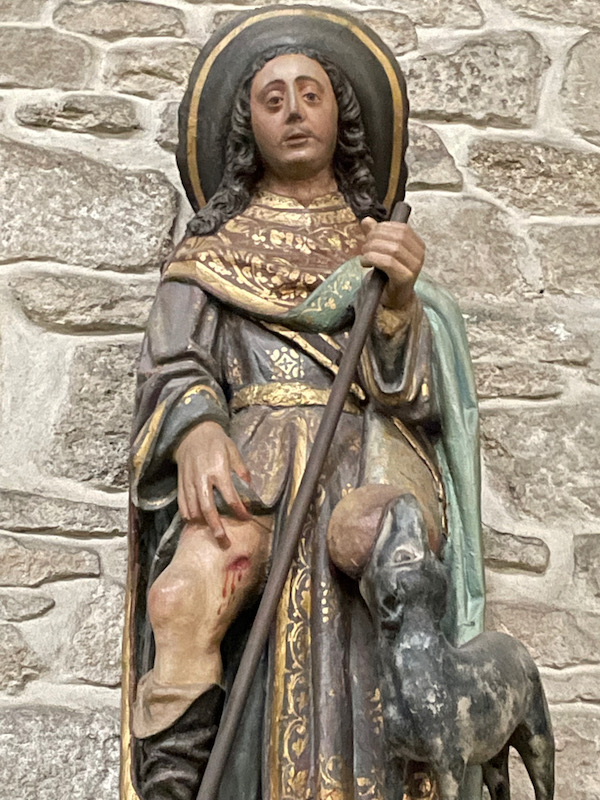
There was quite a bit of information on the stained-glass windows, which date back to late 1800's/early 1900's. This first one is Saint Sebastian, dressed as a Roman officer holding a branch in his right hand and an arrow (the symbol of his martyrdom) in the left.
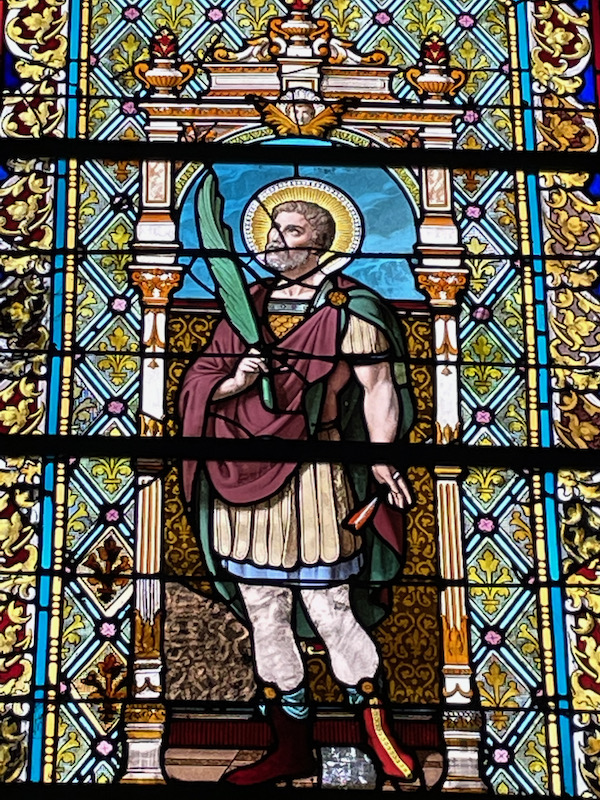
Here we have Saint Peter holding a key and a parchment which reads "You are Petrus..." (You are Peter). The rooster shown at his feet is a reference to his triple denial of Jesus.
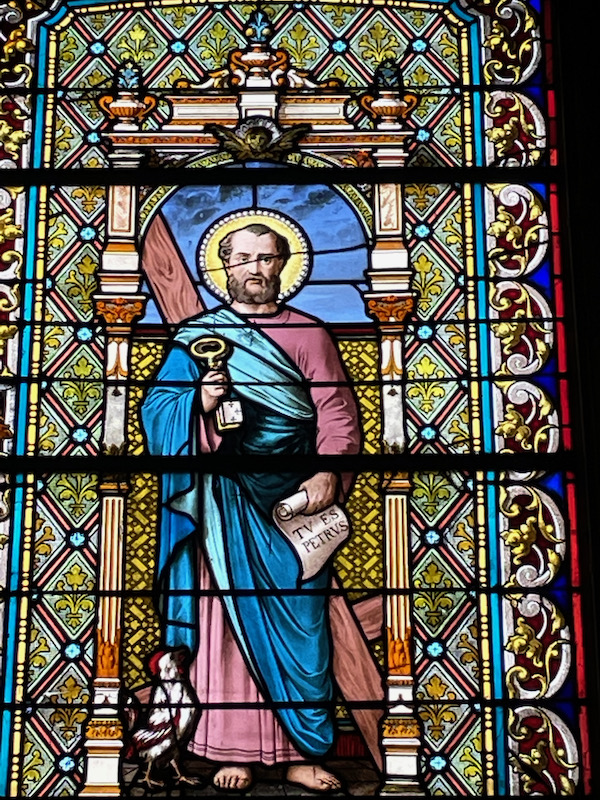
Sainte Anne, who is the patron saint of Bretagne. I could see the date on this one, and it was created in 1904. Saint Anne is shown here teaching the Holy Scriptures to Mary. At the top, two angels carry the basilica of Sainte-Anne-d'Auray.
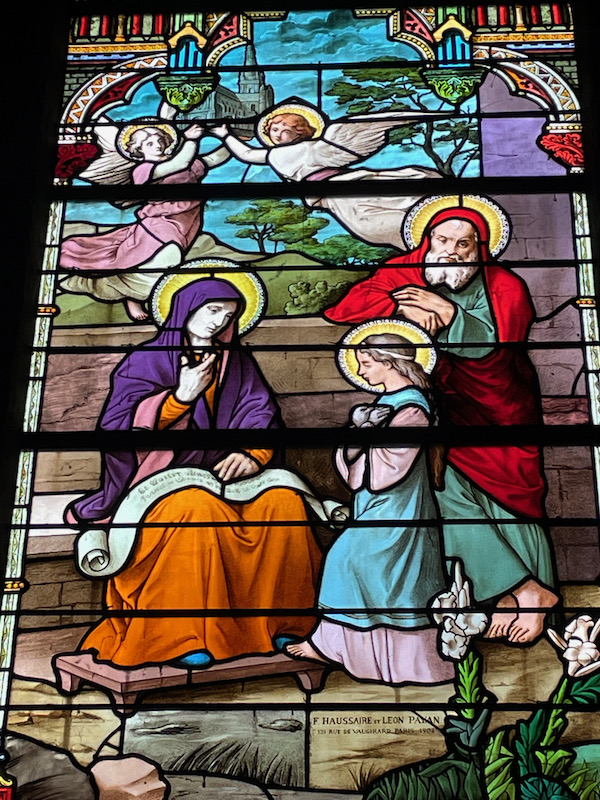
The grand lavoir is the old washing pond. It was built in 1870 of the local Aber granite and was fed by 2 springs that never dried up, even during great droughts. This is one of the few that I have seen in France that have different wash basins ... this one has 7 of them. The washer-women would come down to do the laundry. There was a seniority and the best places were reserved for professional washerwomen. They had the spots at the "front" of the basin, where the water entered from the spring, thereby getting the cleanest water. There are grooves in the stone that allowed the water to flow from one basin to another.


